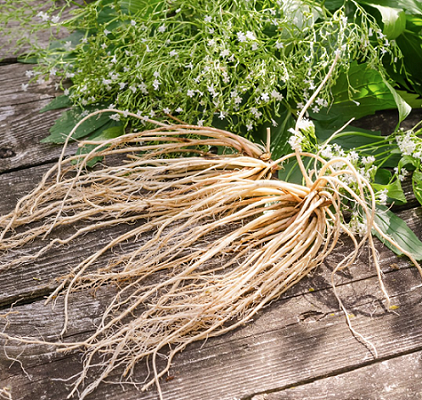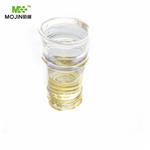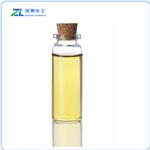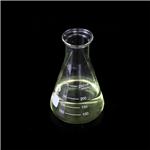Pinene, camphene, borneol, and esters of borneol and valeric acid.
Obtained by steam distillation of the partially dried roots in varying yields (0.4 to 0.6%). Very old roots are not recommended
for distillation because of the valeric acid content in the distilled product. The presence of valeric acid strongly affects the
odor of the oil.
Valerian oil is obtained by steam distillation of well-dried ground roots of Valeriana
officinalis L. (Valerianaceae). It is a yellow-green to yellow-brown liquid
with an extremely strong, characteristic, penetrating odor.The oil becomes dark
and viscous on aging or on exposure to air.
d2525 0.942–0.984; n20D 1.4860–1.5025; α20D ?28 ° to ?2 °; acid number: 5–50;
saponification number: 30–107; solubility: 1 vol in 0.5–2.5 vol of 90% ethanol
at 25 ℃, solutions are clear to opalescent when up to 10 vol of ethanol is added.
The main component of the oil is (?)-bornyl acetate, but it also contains other
bornyl esters (e.g., bornyl isovalerate), terpene and sesquiterpene hydrocarbons,
as well as free isovaleric acid, which contributes strongly to the odor of the oil.
Indian valerian oil is produced from the roots of Valeriana wallichii DC. and
has a musky, woody, balsamic, and earthy odor. Indian jatamansi oil is obtained
from the Valerianaceae species Nardostachys grandiflora DC. (syn. Nardostachys
jatamansi Jones, spikenard).
Valerian oil is produced in limited quantities and is used in flavor and fragrance
compositions only in very low dosages to create certain effects.
Yellowish or brownish liquid; penetrating
odor. Soluble in alcohol, ether, chloroform, acetone, benzene,
and carbon disulfide. Combustible.
Tobacco perfume, industrial odorant, flavors.
The therapeutic activities of valerian oil (Valeriana officinalis) include calming, soothing, and anti-spasmodic. It is also incorporated into cosmetic formulations for perfuming and odor-masking action. Valerian was held in such esteem as a remedy during medieval times that it was called “All Heal.” Its composition is complex, with constituents including alkaloids (catinine and valerine), gamma-aminobutyric acid (gABA), volatile oils (particularly valerenic acid to which valerian’s sedative properties are attributed), formate, flavones such as hesperidin, and terpenes (e.g., l-camphene, l-limonene, and l-pinene). The oil is present in the dried root in quantities of 0.5 to 2 percent depending on the plant variety and place of growth. It is obtained by steam distillation. Reportedly, it can produce headaches when used frequently and in large quantities.
Extractives and their physically modified derivatives. Valerian officinalis, Valerianaceae.
Low toxicity by ingestion. Whenheated to decomposition it emits acrid smoke andirritating vapors.
Valerian is a perennial plant native to Asia and Europe and naturalized in North America. The preparation of valerian, marketed as a dietary supplement, is made from its root, rhizomes, and stolons. Valerian had been used as an herbal medicine in ancient Greece and Rome, but its therapeutic effect was first described by Hippocrates. Galen prescribed valerian for insomnia in the second century. There is no agreement on the uniform mechanism of valerian pharmacologic activity. The mechanism of action could be through GABA agonistic activity or possible effect through adenosine and 5HT-5a receptors.

Valerian root is extracted using steam distillation. The pulverized roots and rhizomes are placed in a chamber with pressurized steam. The steam releases the aroma compounds trapped inside of the plant material and allows them to evaporate with the steam. The steam is condensed to water as it passes through a cooling chamber. The valerian root oil floats to the top of the chamber and is separated from the water. The resulting oil is a deep olive green or brownish colour. Valerian root oil is rich in compounds such as alpha-pinene, camphene, and isovaleric acid.




